Recently updated on August 20th, 2025 at 02:02 pm
When it comes to narrowing down the best National Parks to visit in the US it’s no easy task. Did you know there are 63 National Parks scattered across the United States? That makes it awfully difficult to choose the very best.
Here are 15 of the best US National Parks, whether you want to lace up your hiking shoes, get close to a supervolcano, learn about Indigenous heritage, or try and get that picture-perfect shot.
1. Denali National Park
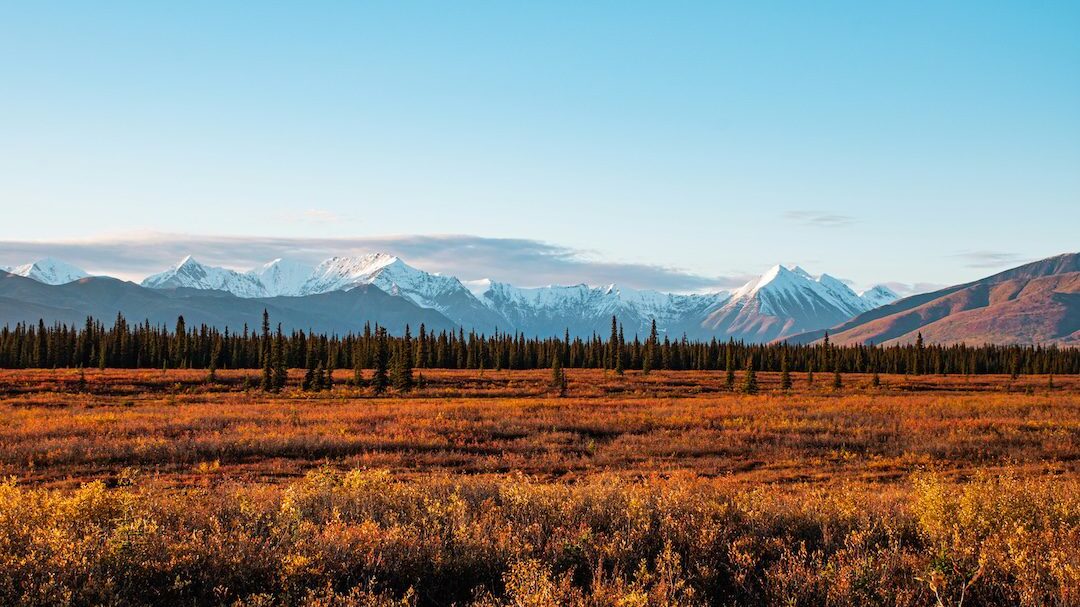

Most famous for Mount Denali, Denali National Park is more than North America’s tallest peak – it’s one of the best National Parks to visit in the US for flora and fauna, and is one of the most rugged environments you can explore. Covering six million acres of wild land bisected by the 135-mile-long Denali Highway, this wild land is home to creatures big and small, from grizzly and black bears to moose, caribou and Dall’s sheep.
The landscape is made up of tundra, boreal forest and ice-capped mountains, where red squirrels, foxes and marmots live. When you travel with Trafalgar, you’ll meet a Local Specialist who will reveal insights into the rare subarctic flora and fauna of Denali National Park and Preserve.
Tour not found.2. Yellowstone National Park
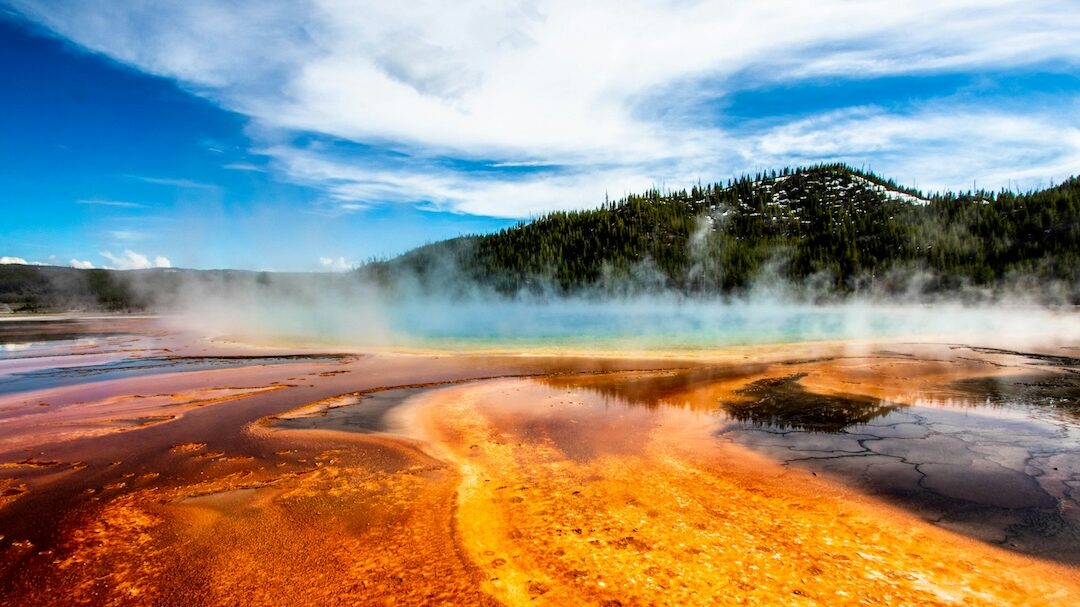

A landmark for many reasons, Yellowstone became the first National Park in the US on March 1 1872. While it’s predominantly located in Wyoming, as one of the largest National Parks in the US spanning 2.2 million acres, Yellowstone also extends into parts of Montana and Idaho.
Best known for the dormant super-volcano it sits on top of, its hydrothermal features are what makes the park unique. Across this lively landscape, over 500 geysers (most famously Old Faithful) shoot water 100 feet into the air, hot springs offer a natural place to unwind, mud pots bubble away, and the Grand Canyon of the Yellowstone is one of the most popular spots for hiking trails.
When you travel to Yellowstone with Trafalgar, explore the Southern Loop of the park with your Travel Director and you explore vast canyons, lush forests and a variety of terrain including alpine mountains, prairies, valleys and waterfalls, while keeping your eyes peeled to see if you can spot bears, wolves, bison, elk and more.
Tour not found.3. Yosemite National Park
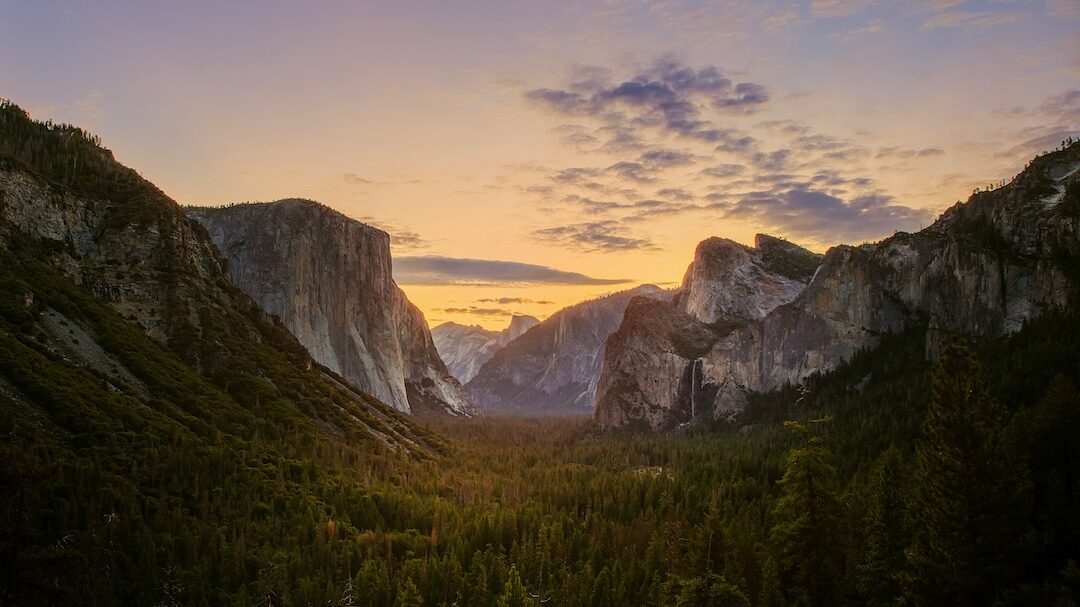

One of the best National Parks to visit in the US for climbers, Yosemite offers views like no other – jutting out of the landscape like huge granite skyscrapers, mega stone monoliths define the park’s scenic vistas.
With cascading waterfalls in spring, wildflower meadows in the summer and some of the most dramatic fall foliage in the US, Yosemite is a photographer’s dream. Yosemite Falls is one of the tallest waterfalls in North America, and the theme of giants continues with its towering sequoia groves and iconic rock formations including Half Dome, Cathedral Rock and El Capitan, the tallest at 2,308 meters.
When you travel to Yosemite with Trafalgar, you’ll meet a climber and naturalist that will delve into the dynamic history of climbing in Yosemite. Enjoy storytelling, photographs and see the old and new climbing gear for yourself, while learning about how they help improve trails, restore habitat, protect wildlife, and inspire the next generation of nature-lovers.
Tour not found.4. Bryce Canyon National Park
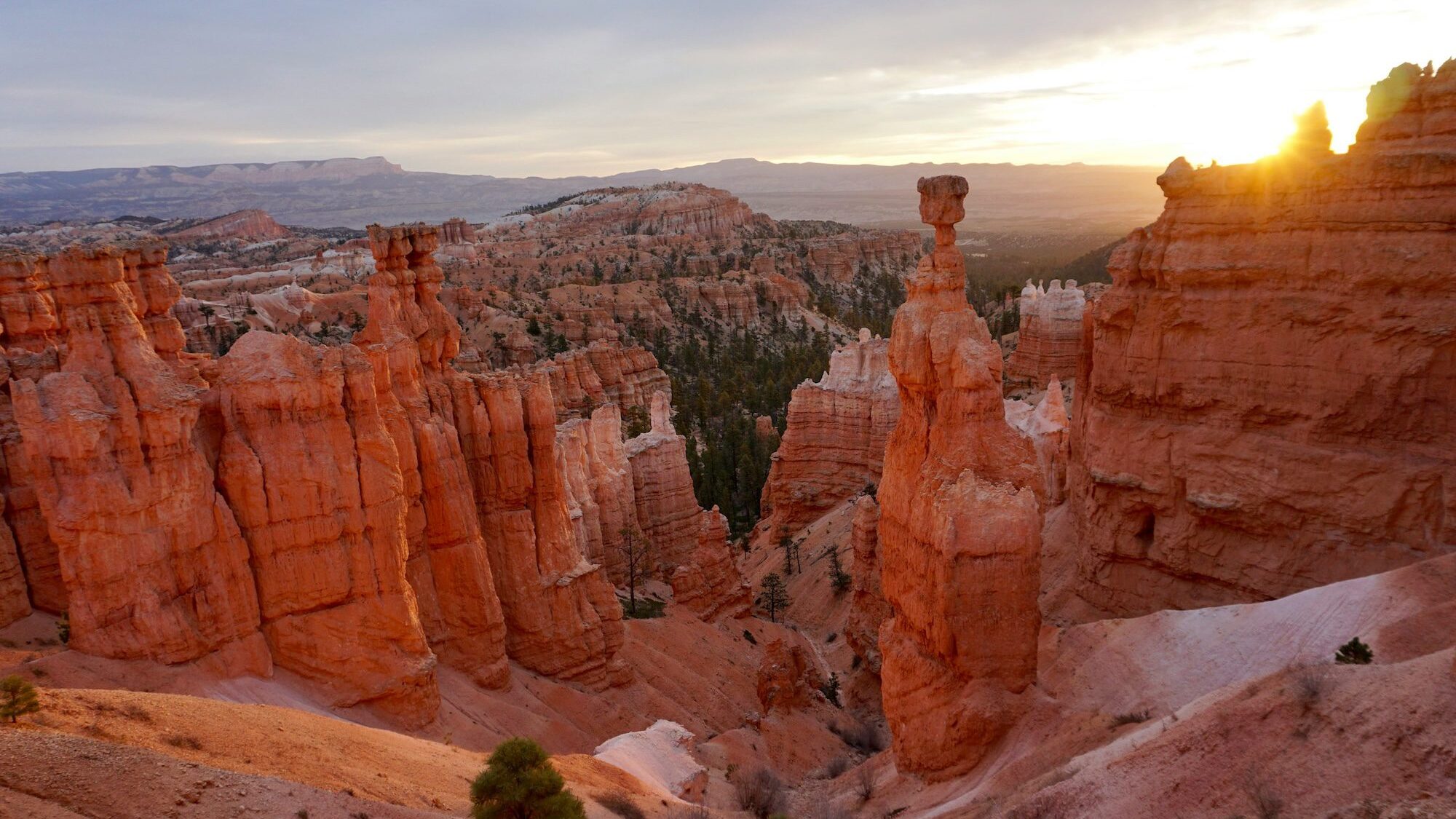

Say hello to hoodoos in Bryce Canyon National Park. Pink, orange and rusty-red limestone spires, known as hoodoos, rise up from the valley floor providing an otherworldly feel to the Utah landscape.
When you arrive at Bryce Canyon National Park with Trafalgar, explore the visitor center to learn more about the history and geology of the park before a scenic drive along Bryce Canyon Road. Swing by some of the park’s most famous spots such as Sunrise Point, Sunset Point and Inspiration Point. Take in the grandeur of the park’s natural amphitheaters, with the contrast of the park’s green alpine forest against the burnt orange rock. In the winter this becomes even more dramatic with a dusting of bright white snow – it’s little surprise that around 1.5 million people visit this moonscape each year.
Tour not found.5. Joshua Tree National Park
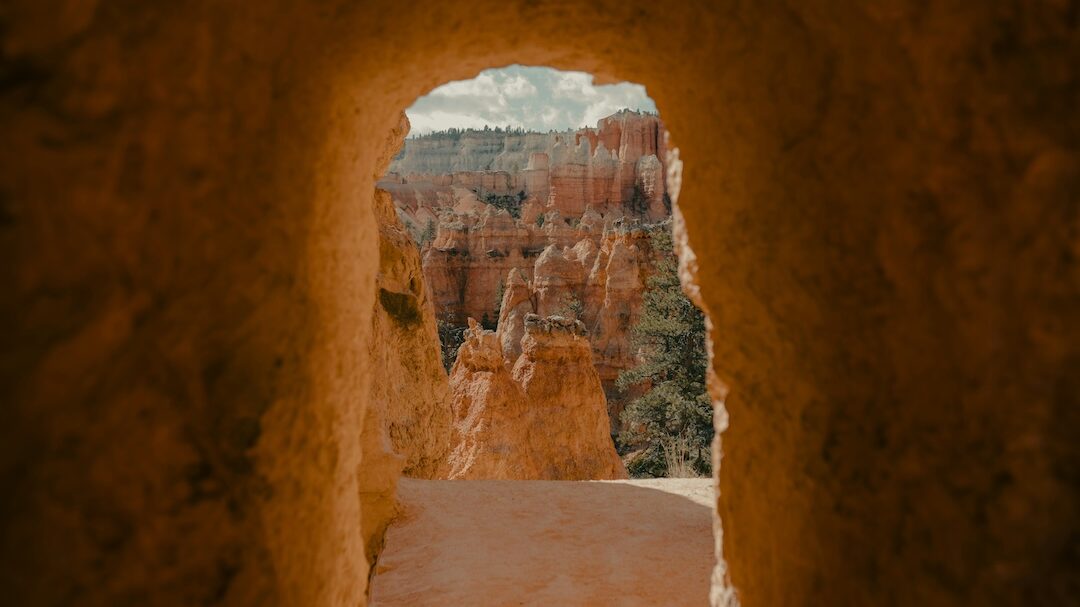

Joshua Tree is where two distinct desert ecosystems meet: the Mojave and the Colorado. Strong winds and abrupt torrents of rain shape this arid park, but don’t be fooled into thinking there’s a lack of life here – far from it. The native desert Joshua Tree after which the park is named is like something out of a fairytale, with twisted branches and jagged leaves.
Many animals such as the desert tortoise, the jackrabbit and the desert bighorn sheep, call this vast wilderness home, and over 300 miles of hiking trails you might be able to spot a few of them. One of the best National Parks in the US to visit for stargazing, you can lay under the stars and watch the Milky Way blaze across the sky.
Tour not found.6. Grand Teton National Park
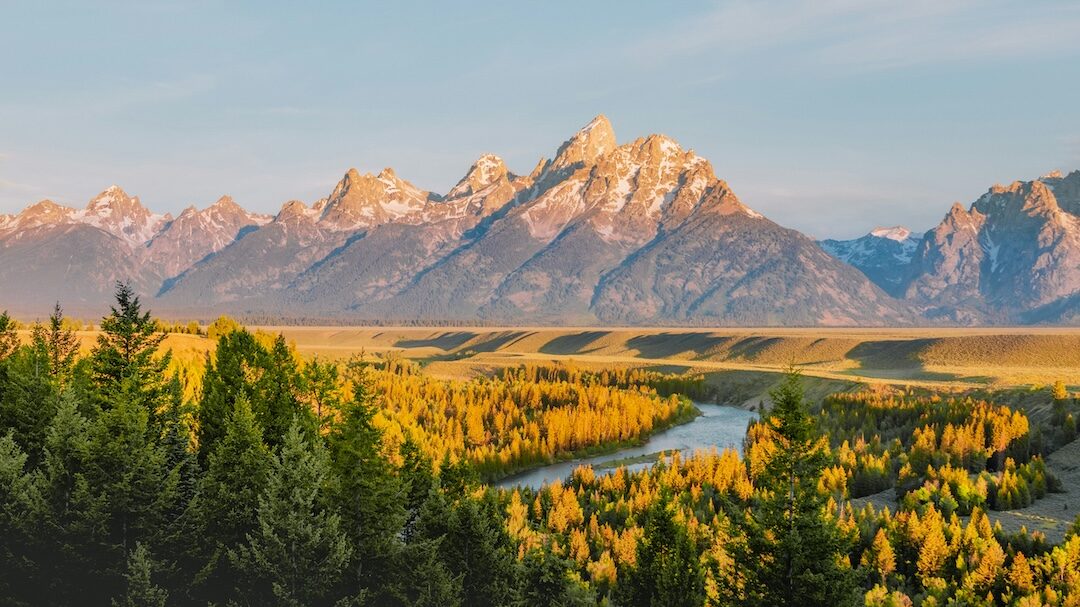

Just a three hour drive from Yellowstone is Wyoming’s Grand Teton National Park. The Grand Teton mountains make for a dramatic skyline that barely looks real with towering 13,775-foot (4,199-meter) peaks watching over the flat plains. The rest of the landscape boasts 310,000 acres of lush valley floors, mountain meadows and alpine lakes.
With Trafalgar, you’ll visit the Craig Thomas Visitor Centre, with views gazing out at the 40-mile Teton Range above. Here you can also explore the themes of place, people, preservation, mountaineering and Native Americans, giving you time to contemplate the past and future of this park. There’s so much exploration to be done, but if you feel like relaxing then a gentle 10-mile float trip down the most scenic stretch of the Snake River in Jackson Hole Valley will allow you to put your feet up, taking in the passing landscape while you learn from your experienced guide how the Snake River is a lifeline to the park’s bison, elk, moose, beaver, pronghorn, deer, bear and 300 different species of birds.
Tour not found.7. Rocky Mountain National Park


Keep an eye out for porcupines, pikas, elk, moose and the odd mountain lion as you traverse through Rocky Mountain National Park, possibly the most popular attraction in Colorado bringing in 4.5 million visitors each year.
Its 415 square miles or wilderness is ripe for exploring, with 355 miles of hiking trails, 147 lakes and 77 mountains towering over 12,000 feet. This alpine ecosystem is excitingly diverse; the lower regions of the park are full of lush plant life and wetland ecosystems, while higher elevations see evergreen forests and mountain lakes appear, with alpine tundra at the highest parts of the park show the life can thrive in even the most extreme environments.
Take the scenic route along Trail Ridge Road with Trafalgar, covering the 48 miles between Estes Park on the park’s east side and Grand Lake on the west. The highway winds above the treeline, with the park’s evergreen forests come to a halt at around 11,500 feet, with the highest point at 12,183 feet elevation – expect thrilling views, wildlife sightings and spectacular alpine wildflower exhibitions.
Tour not found.8. Zion National Park


Zion is the third most popular American National Park with 3.6 million visitors each year, and it’s a fan favorite for a reason – jaw-dropping canyons, red rock faces that glow in the sun and towering waterfalls are a hiker’s paradise. The park’s most famous trail is the Angel’s Landing which takes walkers up a narrow ridge (the hike requires a permit and is certainly not for beginners), but you don’t have to look far for other scenic routes with over 100 hiking trails to choose from.
You’ll unlock geological history as you walk the paths and trails of Zion National Park when you travel with Trafalgar, following in the footsteps of Native Americans and the earliest pioneers. The lush vegetation, wild rivers, roaring waterfalls and towering cliffs of this park will have you reaching for your camera again and again. You’ll even drive through the amazing 1.1-mile, sandstone Zion-Mount Carmel Tunnel built from the late 1920s through 1930, when it was the longest tunnel of its type at the time.
Tour not found.9. Grand Canyon National Park


The second most-visited National Park in the US is also home to one of the seven natural wonders of the world – the Grand Canyon. At 18 miles wide, 227 miles long and a mile deep, this spectacular feature is the result of the Colorado River carving away at the rock over millions of years. See the canyon from above as you explore the park on foot, or take to the water as you follow the river’s winding path.
With Trafalgar you’ll go beyond just the viewpoints, as incredible as they are. Explore the Rim Trail and Visitor Center, and make the great outdoors your classroom when you meet geologist Canyon Tim for an enlightening talk about the Grand Canyon at the South Rim, tapping into over 30 years of geological experience. Next up, at Desert Viewpoint Inter-tribal Cultural Heritage Site learn about the 11 Grand Canyon tribal communities; discover Native crafts watching a carpet weaving demonstration, or you may enjoy traditional song and dance performances.
Tour not found.10. Death Valley National Park
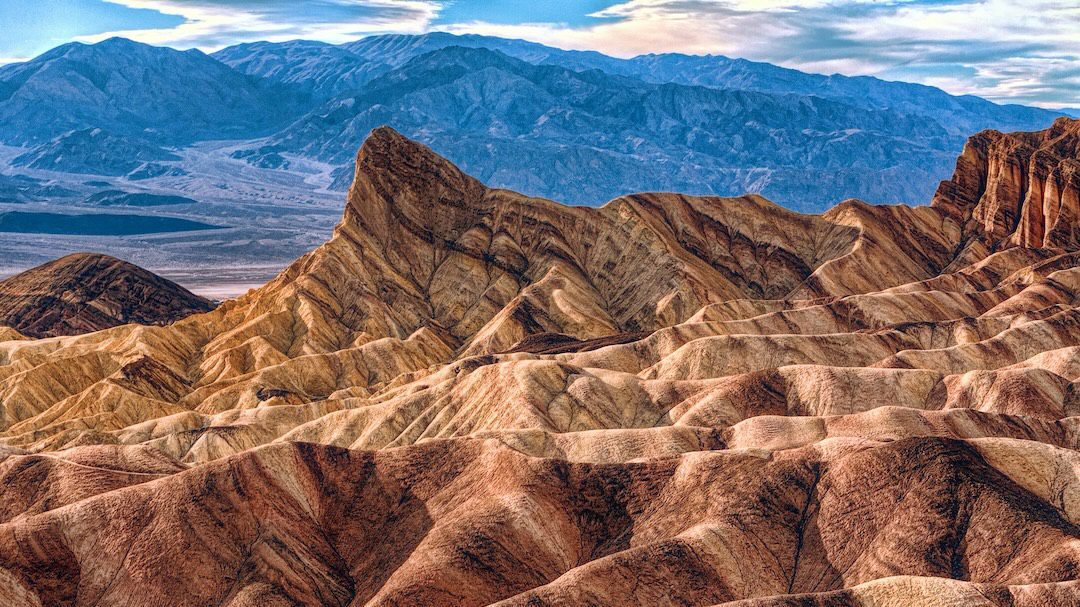

Death Valley might sound intimidating, but this vast land is unexpectedly lively, and one of the best National Parks to visit in the US if you want to push yourself out of your comfort zone. Its geology is uniquely beautiful, with sand dunes surrounded by volcanic craters and the sites. You’ll discover the unique geological features of Death Valley, a land of sand dunes and volcanic craters, intriguing weather-patterns, and the highest-recorded temperatures in the United States.
Admire scenic views of the undulating rocky landscape at Zabriskie Point (pictured above) which truly shiens at sunrise, and descend to the Badwater Basin, the lowest point in the US at 282 feet below sea level.
11. Saguaro National Park
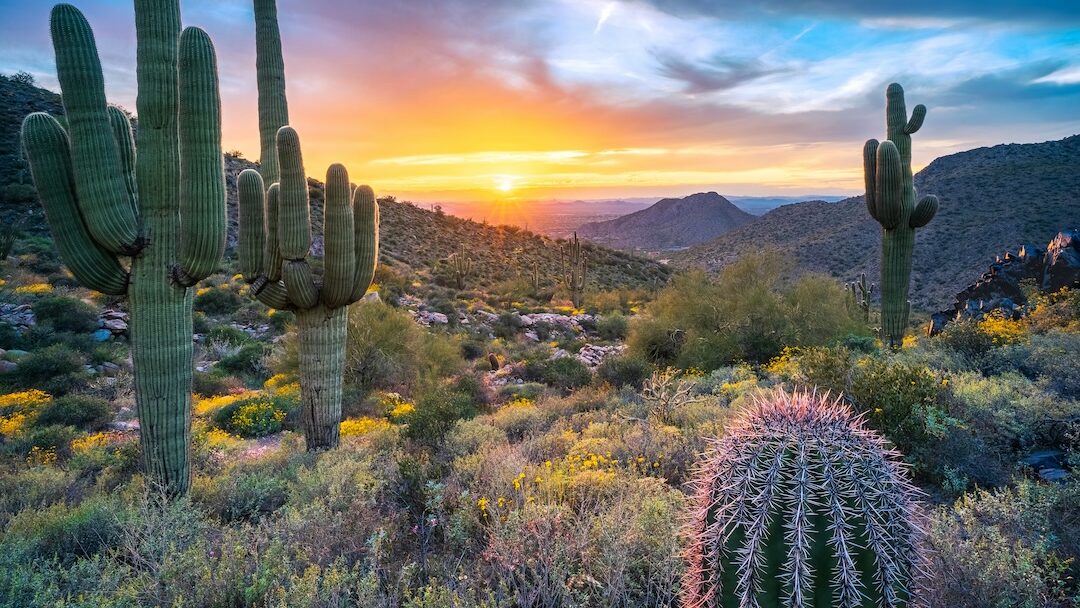

Saguaro National Park is named after the largest species of cacti in the country, the giant saguaro, a symbol of the American southwest. The park is divided into two separate areas on either side of the city of Tuscon: the Tucson Mountain District and the Rincon Mountain District. Spring is cactus flowering season, when the desert landscape becomes a meadow of flowering cacti.
With Trafalgar you’ll visit the Rincon Mountain District to better understand how both districts preserve Sonoran Desert landscapes, fauna, and flora, including of course the iconic cactus You’ll learn about the national park’s mission to protect these majestic plants, which are only found in a few places in America.
Tour not found.12. Sequoia National Park
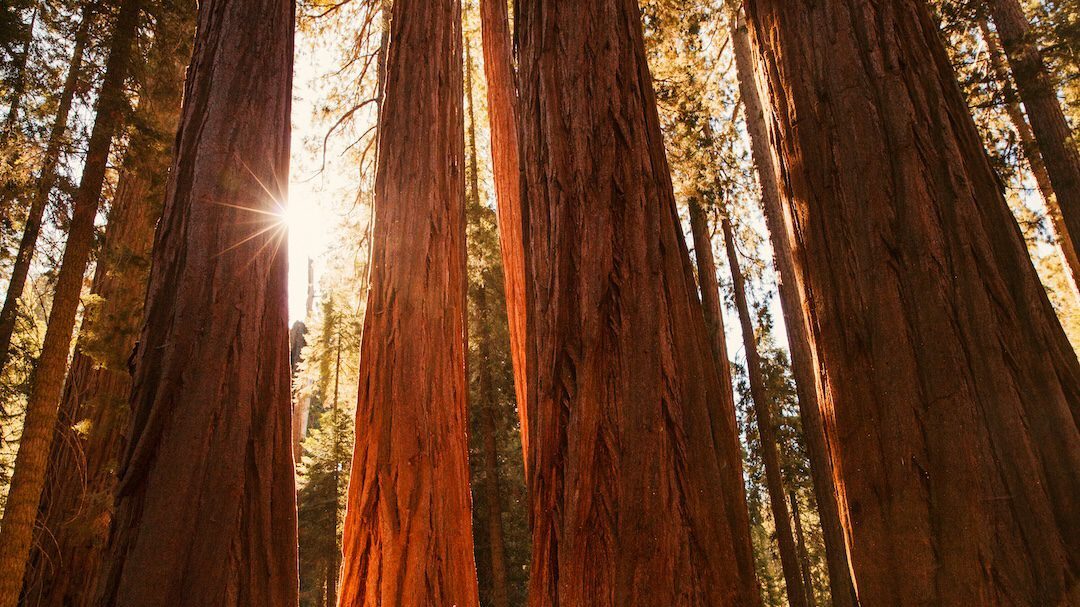

Walk among giants when you visit Sequoia National Park, home to five of the ten largest trees in the world. Located in California’s southern Sierra Nevada mountains, nothing can quite prepare you for a walk through the Giant Forest, where the General Sherman Tree – the largest tree on Earth by volume – is found. There’s no shortage of things to do in this tranquil park, whether it’s visiting the Giant Forest Museum, walking along the Big Trees Trail, or seeing the sun set over the canopy from above with a hike up to Moro Rock.
With Trafalgar, you’ll see this incredible forest by night under California’s brilliant skies. Meet a Local Specialist who will delight you wiht stories and astronomical news as you watch the Milky Way spill across the sky, taking you across constellations, galaxies, planets, and the history of human space and exploration.
Tour not found.13. Glacier National Park
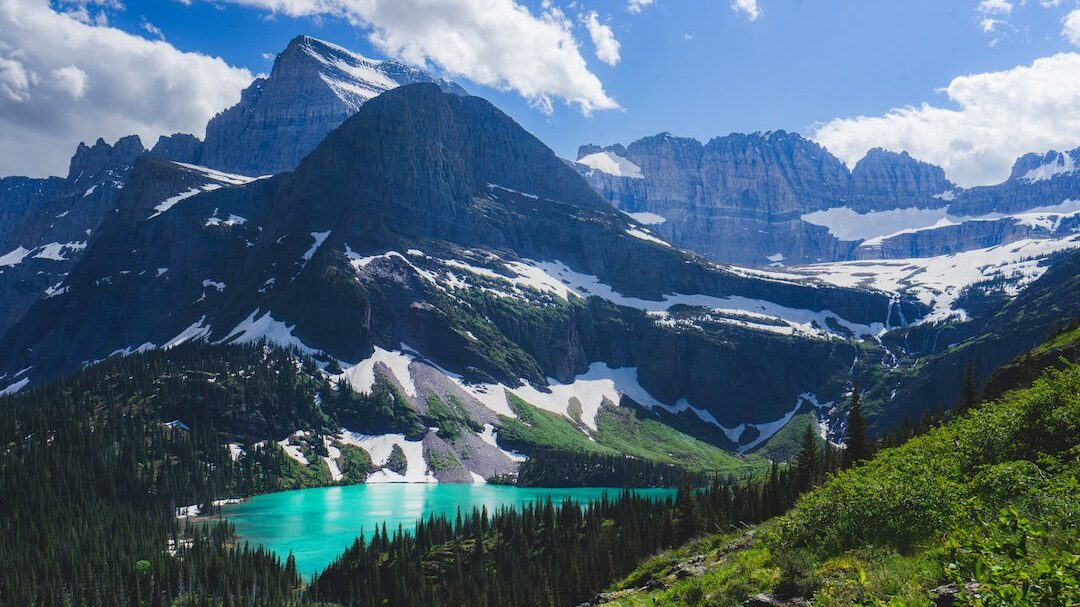

Glacier National Park is an idyllic natural showcase of alpine meadows, green forests, carved valleys, waterfalls, azure lakes and, of course, glaciers. Over 700 miles of trails give visitors the opportunity to explore it 200 lakes and 25 glaciers, keeping an eye out for the animals that call the park home including bighorn sheep, mountain goats, ptarmigan birds, and both black and grizzly bears, among others.
There are plenty of activities in this natural playground, from white water rafting to kayaking across the lakes, hiking, and mountain biking – but there are some incredible people to meet as well. With Trafalgar, you’ll get a unique chance to Join Mariah Gladstone of the Blackfeet and Cherokee nations. She will welcome you onto traditional Blackfeet territory to learn about Blackfeet history, culture and the connection Mariah and her ancestors have had to this land (that is now part of Glacier National Park) for thousands of years. Discover contemporary Indigenous life, such as Mariah’s work within food advocacy reimagining Native foods.
Tour not found.14. Arch National Park
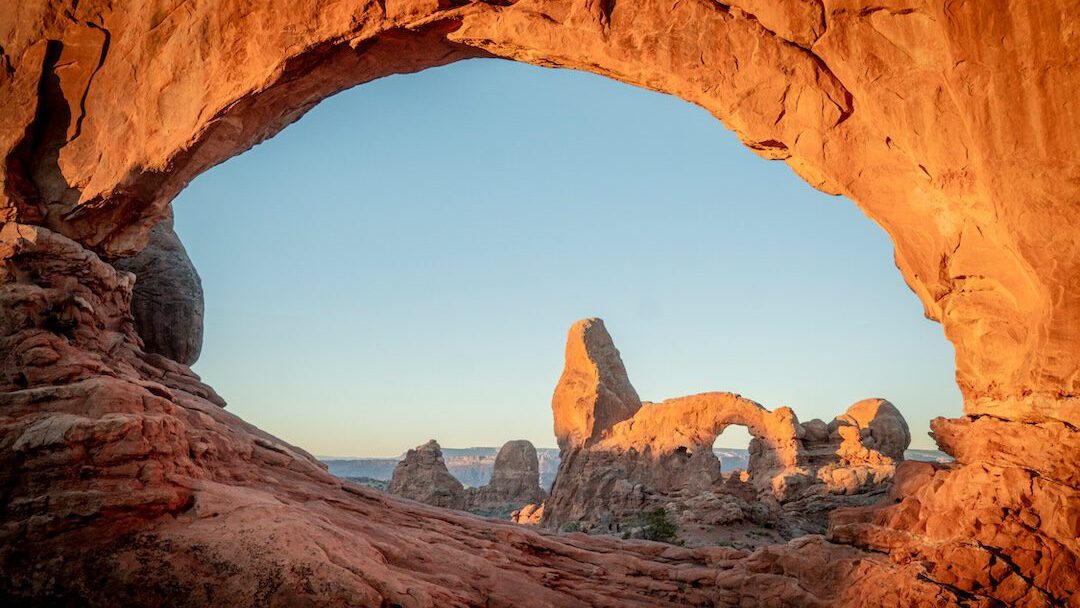

Have your camera at the ready from the moment you enter Arches National Park, one of the best National Parks to visit in the US for photographers. The park’s iconic natural sandstone arches, of which there are 2,000, have been formed by rain and wind over thousands of yers. Here you can see the densest concentration of natural stone arches in the world, such as the most famous Delicate Arch at 46 feet high and 32 feet wide. You’ll have to lace up your hiking boots to see many of these iconic arches, but we can guarantee it’s worth the effort.
Tour not found.15. Badlands National Park
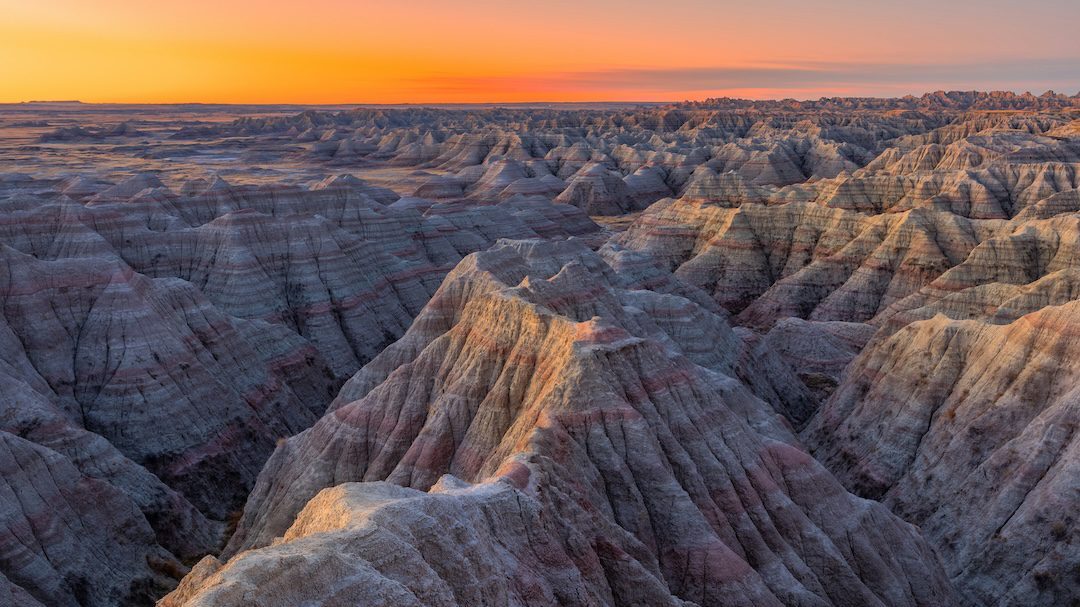

Badlands National Park is an incomparable landscape, spanning 244,000 acres of sharply eroded buttes, pinnacles and spires, sitting alongside the largest protected mixed grass prairie in the US. A true insight into ancient history, scientists and tourists alike visit Badlands, where the world’s richest trove of fossils from the Oligocene epoch can be found, estimated at 23 to 35 million years old.
If you’re short on time, take a road trip through the park along the Badlands Loop Road, making time to stop and take in the views as you drive. Look out for wildlife like bison, bighorn sheep, coyotes, prairie dogs, burrowing owls and pronghorn. The perfect break from the barren landscape? The famous Wall Drug, an establishment in the park that offers free iced water to travelers (and has been since the 1930s).
What is the #1 visited National Park?
Top of the National Parks list is Great Smoky Mountains National Park, which saw more than 12 million visitors enter its gates in 2024. Travelers can explore its misty peaks and waterfall-filled valleys via a mountain-skimming scenic highway or by taking 800-plus miles of hiking trails stretching across North Carolina and Tennessee.
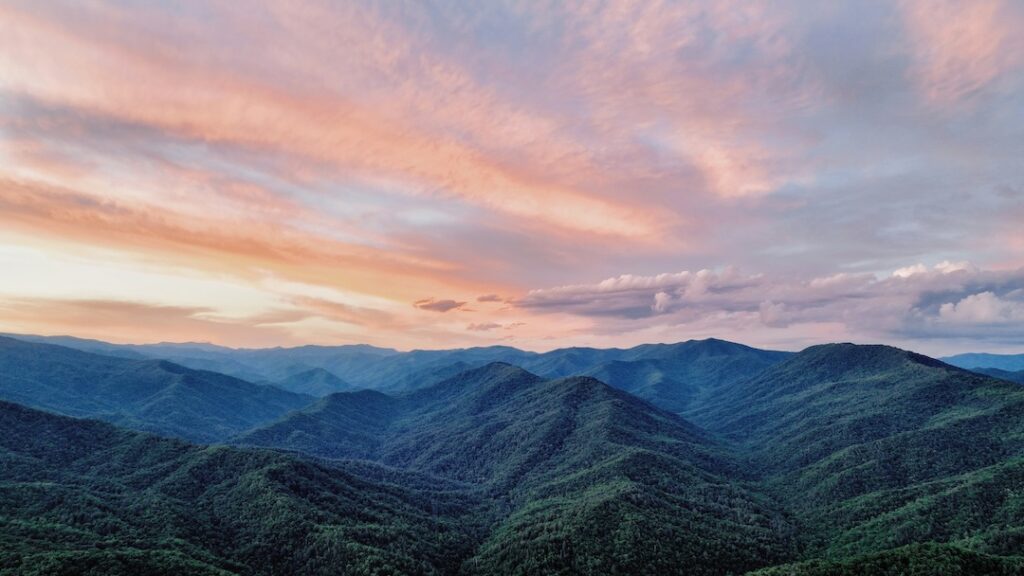

What is the prettiest National Park in the USA?
This is one of the most difficult questions when it comes to the best National Parks to visit in the US, but Yosemite National Park is often sited as one of the best National Parks to visit in the US for beautiful scenery. With its mix of waterfalls, glacial lakes, giant redwood trees, valleys, cliffs and domes, there’s something for everyone in Yosemite – and it’s one of the most popular National Parks for this reason.
Which National Park is best to visit first?
As the USA’s first National Park, Yellowstone is a great choice if you’re visiting one for the first time. As it’s one of the larger parks you don’t need a reservation, and this also means you’re less likely to encounter large crowds on the trails. With over 900 miles of trails to explore you won’t be short of things to do here, and Yellowstone is incomparable in terms of its geothermal activity, with geysers and hot springs unlike anywhere else in the US – or the world. If you have time then you can swing by the nearby Grand Teton, ticking off two parks in one trip.
Discover the natural wonders of this diverse country with Trafalgar’s US National Parks tours.